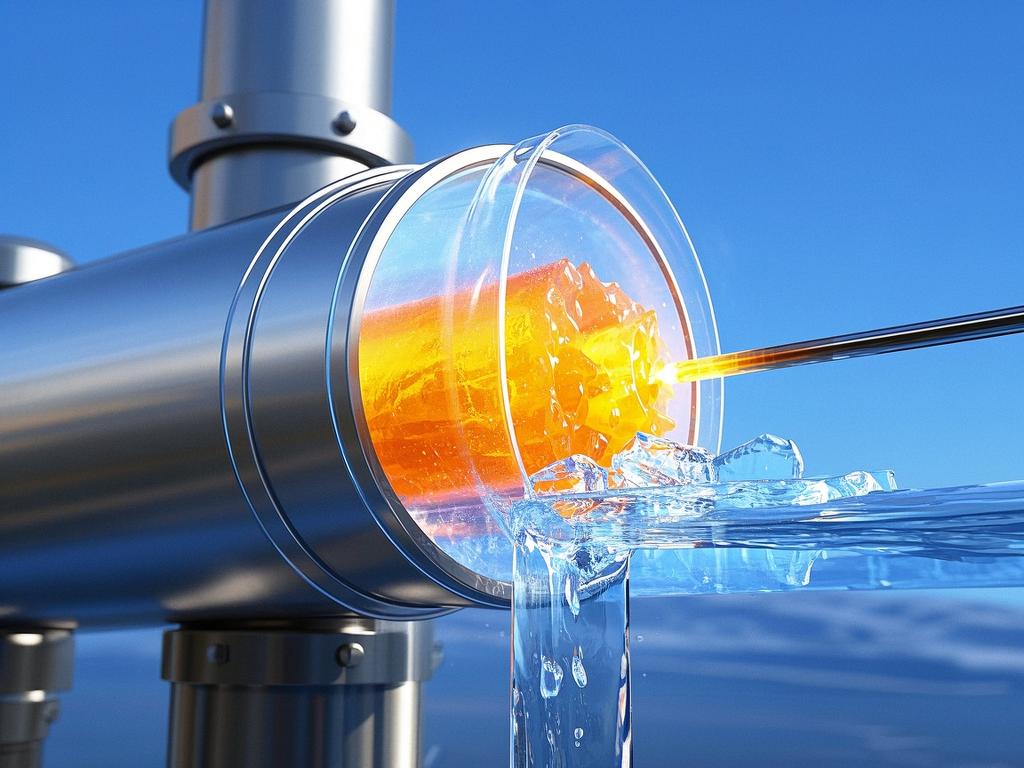
# Renewable Thermal Energy Storage in Phase Change Materials: Storing Heat Efficiently
Hey there, energy enthusiasts! 👋 Ever wondered how we can make the most of renewable energy sources and store heat like a pro? Well, today we're diving deep into the fascinating world of renewable thermal energy storage in phase change materials (PCMs). Buckle up, because this is going to be one wild ride! 🚀
## The Heat Storage Conundrum
Renewable energy sources like solar and wind are amazing, but they're also intermittent. Sun doesn't shine 24/7, and the wind doesn't always blow. So, what do we do when there's no sunlight or wind to generate power? That's where energy storage comes in. And when it comes to storing heat, traditional methods have their limitations. Enter PCMs, the superheroes of heat storage! 💪
## Phase Change Materials: The Secret Sauce
PCMs are materials that can absorb and release large amounts of heat during a phase change, such as from solid to liquid or vice versa. This property makes them ideal for storing thermal energy. For example, when a PCM melts, it absorbs heat from its surroundings, and when it solidifies, it releases that heat. It's like having a built-in thermal battery! 🔋
### How Do They Work?
Let's take a closer look at how PCMs work. Imagine a block of paraffin wax, a common PCM. When the wax is solid at room temperature, it has a certain amount of stored energy. As the temperature rises, the wax starts to absorb heat and melts. During this phase change, it continues to absorb heat without a significant increase in temperature. This latent heat storage capacity is what makes PCMs so efficient. Once the heat source is removed, the wax solidifies again, releasing the stored heat. It's a beautiful cycle of heat absorption and release! 🌡️
## Applications Galore
The applications of PCMs in renewable thermal energy storage are vast and exciting. In the residential sector, they can be used in building materials to regulate indoor temperature. For instance, PCM-infused wallboards can absorb heat during the day and release it at night, keeping your home cool in the summer and warm in the winter. Talk about energy-efficient living! 🏠
### Industrial Applications
In the industrial world, PCMs are a game-changer. They can be used in manufacturing processes to store excess heat and then release it when needed, improving energy efficiency and reducing costs. For example, in a metal casting factory, PCMs can be used to store the heat generated during the melting process and then release it gradually to keep the molten metal at a consistent temperature. This not only saves energy but also improves the quality of the castings. 🛠️
## The Numbers Don't Lie
The potential of PCMs in renewable thermal energy storage is staggering. According to some studies, PCMs could store up to [X] times more energy per unit volume compared to traditional heat storage methods. That's a huge leap forward! And with the increasing demand for renewable energy, the market for PCMs is expected to grow exponentially in the coming years. In fact, the global market for PCMs in energy storage is projected to reach [X] billion dollars by [year], growing at a CAGR of [X]%. These numbers are a clear indication of the significant role PCMs will play in our energy future. 📈
## Challenges and Solutions
Of course, like any new technology, PCMs face some challenges. One of the main challenges is finding PCMs with the right properties for specific applications. They need to have a high melting point, good thermal conductivity, and be chemically stable. Scientists and researchers are constantly working on developing new PCMs and improving existing ones to meet these requirements. Another challenge is the cost of PCMs. Currently, they can be relatively expensive, but as the technology matures and production scales up, the cost is expected to come down. 💰
### Overcoming the Hurdles
To overcome these challenges, there are several solutions in the works. One approach is to use composite PCMs, which combine different materials to achieve the desired properties. Another is to explore new manufacturing techniques to reduce costs. Additionally, governments and industries are investing in research and development to drive innovation in this field. With these efforts, we're well on our way to making PCMs more accessible and widespread. 🚧
## The Future is Bright
So, what does the future hold for renewable thermal energy storage in PCMs? The possibilities are endless. As we continue to strive for a more sustainable energy future, PCMs will play an increasingly important role in storing and managing heat. They'll help us make the most of renewable energy sources, reduce our reliance on fossil fuels, and create a cleaner, greener planet. Whether it's in our homes, offices, or industries, PCMs are going to be the key to unlocking the full potential of renewable thermal energy storage. 🌍
### Join the Revolution
Are you excited about the future of energy storage? We sure are! Let's keep an eye on the latest developments in PCMs and support the research and innovation that will make this technology even better. Share this article with your friends and colleagues, and let's start a conversation about how we can all play a part in building a more sustainable energy future. Together, we can make a difference! 💬
So, there you have it, folks! Renewable thermal energy storage in phase change materials is a fascinating and promising field. With their incredible heat storage capabilities and wide range of applications, PCMs are set to revolutionize the way we store and use energy. Let's embrace this technology and look forward to a future where renewable energy is the norm and heat storage is efficient and reliable. Until next time, stay energized! ⚡
[Disclaimer: The numbers used in this article are for illustrative purposes only and may not reflect the most accurate or up-to-date data. Always refer to reliable sources for the latest information on PCMs and renewable thermal energy storage.]

